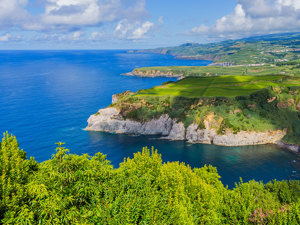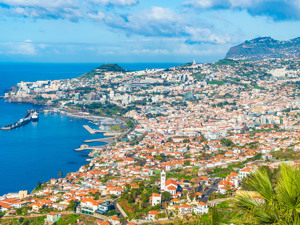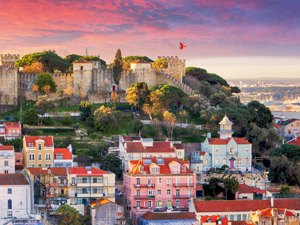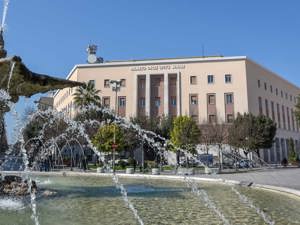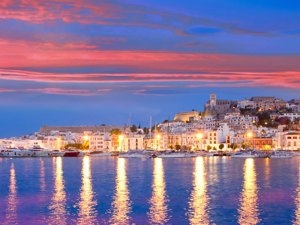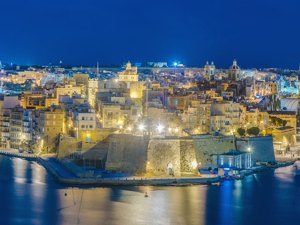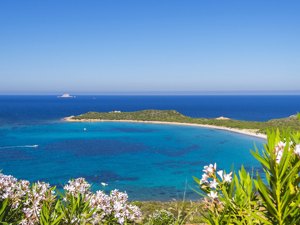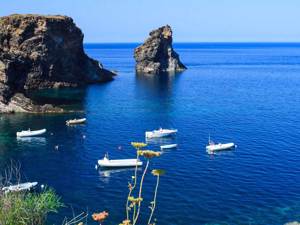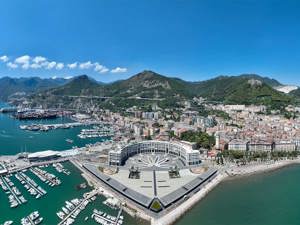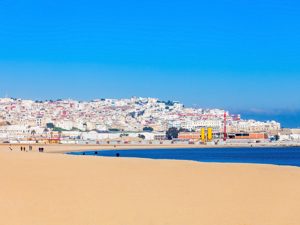The capital of the legendary Algarve, the true heart of Portugal
Gateway to the Algarve, the southernmost region of Portugal, and thanks to its convenient and nearby international airport - only few kilometres from the city - Faro enchants the visitor with its mix of pristine nature and ancient history, which is largely influenced by ancient Arab rule. For a long time the city and its surroundings were under the rule of the Moors, who however left an important artistic legacy in the beautiful architecture, until the “reconquista” in 1249 by the thirteenth-century King Alfonso III, who reintroduced it to Christianity.

Faro Photo: Copyrigh © Sisterscom.com / Shutterstock
The Sé Cathedral
These events have been immortalised in various monuments, such as the Arch of Rest, where it is said that the king stopped after the “Reconquista”, and the imposing Baroque Sé Cathedral - acronym of Episcopal See - erected in 1251 in the place where a mosque stood, two years after the region and the city had returned to Christianity.
 The Sé Cathedral Photo: Copyright © Sisterscom.com / Shutterstock
The Sé Cathedral Photo: Copyright © Sisterscom.com / Shutterstock As well as the cathedral, there are many other valuable places of worship, such as the São Pero Church and the São Francisco Church, which is richly adorned with typical azulejos and wood carvings covered with gold foil. The Igreja do Caro Church with its beautiful Baroque façade houses the curious and slightly disturbing Chapel of the Bones, one of Faro’s most important attractions, where the bones of the monks who once lived in the city are artistically and geometrically arranged. The ancient history of the city is illustrated in extensive detail in the Municipal Museum, now located in the sixteenth century Convent of Our Lady of the Assumption.

Arco da Vila Photo: Copyright © Sisterscom.com / Shutterstock
Arco da Vila
The Arco da Vila, the tallest and oldest arch of Portugal, gateway for a time for those arriving from the sea, leads into the old part of the city, known la vila adentro. This is home to the impressive 11th century Arabian Gate leading to the lively Rua de Santo Antonio, with its typical Portuguese paving and elegant shops and restaurants.
In the nearby Avenida Sa Carneiro, you come across, almost suddenly, the picturesque town market with its varied stalls that display and sell exquisite food specialties, including oranges, almonds, figs, olives and carob as well as unique craft products.
From the top of the hermitage of Santo Antonio - the most loved and remembered Saint in the area, who was born and spent much of his life in Portugal, and of which he is Patron Saint -, you can enjoy a breathtaking view of the sea and on the salt flats below. It is in fact the unspoilt nature of Faro’s surroundings that make it so astonishing, and the majestic park, the Manuel Bivar Gardens, are considered the “gathering place” of the city.
Ria Formosa

Ria Formosa Natural Park Photo: Copyright © Sisterscom.com / Shutterstock
Faro’s position is among the most spectacular in the area. It is located in the heart of the Ria Formosa, a large and diverse natural park interspersed with lagoons, canals, islets, salt marshes, where about 1500 species of creatures, including a great variety of rare migratory birds, live in freedom. It is a place that can be reached by boat from the small port.
The beaches of Faro
Near the sea, Faro is known for its long stretches of sand from where boat trips depart for the surrounding islands, including the island of Culetra, a popular sailing destination. The beaches are equipped but quiet, and among these are the beaches of the Island of Faro, Farol, Culatra and Deserta.
 Beach of Farol Photo: Copyright © Sisterscom.com / Shutterstock
Beach of Farol Photo: Copyright © Sisterscom.com / Shutterstock The best way to take in the entirety of the surrounding area is to climb the lighthouse of Cabo Santa Maria, the most southern point of this magical region. According to an old saying, to discover the true side of Portugal you must visit Faro and immerse yourself in its quiet atmosphere and the charm of its ancient traditions, including its food.
Algarve cuisine and its specialties
The Algarve cuisine uses for its dishes, fish and seafood. There are, in fact, many temptations when it comes to typical local dishes, such as 'Belongo Pato' clams, named in honour of the great Portuguese poet, or Portuguese stew; and finally the salted cod, the renowned Atlantic “bacalhau”, which is cooked in a variety of ways: for this reason it is said that in Portugal there are as many recipes for this fish as there are days of the year
Text by Anna Glik
Updated by Nicolò Villa
Avion Tourism Magazine
Photos for editorial use onl: Copyright © Sisterscom.com, Shutterstock
Copyright © Sisterscom.com
Photos for editorial use onl: Copyright © Sisterscom.com, Shutterstock
Copyright © Sisterscom.com
Video: www.visitalgarve.pt
Tourism Board
www.visitalgarve.pt
www.visitportugal.com
Partnership with Booking.com
Where to sleep in Faro

Faro Photo: Copyright © Sisterscom.com / Shutterstock
Faro is a welcoming city and offers different possibilities for accommodation.
To find the ideal hotel and the best offers you can do a search for the stars but also for districts or landmarks.
DISTRICTS
Hotels in the districts
LANDMARKS
Hotels in tourist areas
AIRPORT
Hotels near the airport
HOTEL NEARBY FARO
WHERE TO GO TO FARO
Monuments of Faro
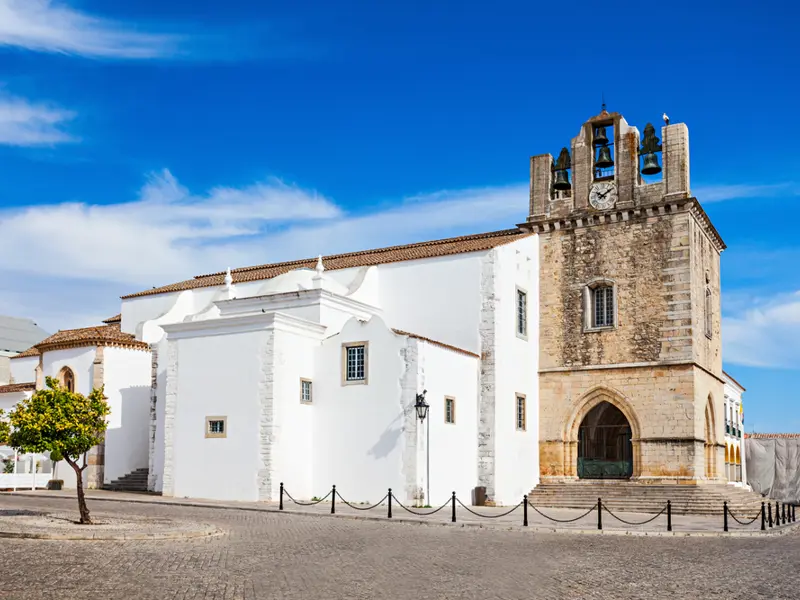
Photo: Copyright © Sisterscom.com / Shutterstock
Sé Cathedral of Faro
The Igreja de Santa Maria, dating back to the thirteenth and fourteenth centuries and elevated to Sé Catedral de Faro in the sixteenth century, preserves some architectural elements of its original structure, such as the bell tower and two chapels. The sacred images and rich wooden, carved and gilt decorations preserved in the Sé of Faro make up one of the most important art collections of the seventeenth and eighteenth centuries in the Algarve.

Photo: Copyright © Sisterscom.com / Shutterstock
Igreja da Misericórdia of Faro
In 1499 the Ermida do Espírito Santo, a hermitage, was built on this site as part of the restoration of the city promoted by King D. Manuel I. At the end of the sixteenth century, Bishop D. Afonso Castelo Branco (1581-85) decided to replace the chapel with today’s “Igreja da Misericórdia”, with an adjacent hospital. One of the most interesting aspects of the building is that it is the only one in the Algarve to have a Greek cross floor plan. Inside it has a great altar with an interesting mannerist retablo dating back to the beginning of the seventeenth century. The triumphal arch, abundantly decorated with carved wooden decorations and gilded in Rococo style, is connected to the altar-pieces of the side altars. The church also has a valuable collection of eighteenth century sacred images.

Photo: Copyright © Sisterscom.com / Shutterstock
Igreja do Carmo
The Igreja do Carmo is a very large church with a single nave and imposing façade, which is embellished by two soaring bell towers on either side. The church was built between 1713 and 1719 while the last bell tower was completed in 1807. It is an example of Baroque architecture, with a symmetrical façade built in the style of D. João V.

Photo: Copyright © Sisterscom.com / Shutterstock
Arco da Vila em Faro
This is a monumental archway that was commissioned by Bishop D. Francisco Gomes de Avelar in the nineteenth century and designed by the Italian architect Francesco Saverio Fabri. Inaugurated in 1812, it was built into one of the medieval gates of the city of Faro and features a niche representing St. Thomas Aquinas, while inside, you can admire the Árabe Gate.
Museums in Faro
Faro Municipal Museum
The Museu Arqueológico is found in the old Convent of Nossa Senhora da Assunção. The core collection of the museum is made up of archaeological finds dating back to the period between prehistory and the Middle Ages, with particular focus on the Roman era. Some of the Roman artefacts include those from the Milreu ruins: the mosaic of the Ocean, two tombstones whose inscriptions make reference to Ossonoba and busts of the Emperors Agrippina, Hadrian and Gallienus. Also part of the museum’s heritage is a collection of sacred art with religious paintings dating back from the seventeenth and the eighteenth centuries, some azulejos (ceramic tiles) and decorative items of various types on display in the Ferreira de Almeida Hall.
Museo Regionale di Algarve
The Ethnographic Museum of Faro preserves typical objects and photographs illustrating the regional ethnography of the sixteen municipalities of the area. The museum is located in the Municipal Assembly building, which dates back to the beginning of the 20th century. The museum takes you on a journey into the past by recreating the rooms of the traditional Algarve house.
Excursions in Faro

Photo: Copyright © Sisterscom.com / Shutterstock
Milreu Roman ruins
The Roman villa of Milreu, dating back to the first or second century, was modified in the fourth century and occupied until the sixth or seventh century. Currently the structure of a large villa with agricultural buildings, thermal baths and a temple can be seen.

Photo: Copyright © Sisterscom.com / Shutterstock
By boat along the Algarve coast
Several boats leave from Faro, Olhão and Tavira to the Natural Park of Ria Formosa, where you can sail among canals, peninsulas and islets to observe the fauna and flora. Boats, catamarans and taxi motorboats leave for the isolated beaches of the islands of Armona, Culatra, Farol and Deserta.

Photo: Copyright © Sisterscom.com / Shutterstock
Ria Formosa Nature Reserve
The Ria Formosa is a labyrinth of canals, islands, lagoons and sand dunes that extends for 60 km along the coast of the Algarve between the beaches of Garrão and Manta Rota. The variety of ecosystems present attracts different species of animals, including numerous birds. One of the rarest is the purple gallinule, symbol of the Nature Reserve, which is found in no other place in the country. If you would like to see this rare bird with its showy plumage and know more about this protected area, begin your tour at the Centro de Educação Ambiental de Marim, which will give you advice on the most appropriate paths to take and the hides to visit, where you can watch the daily life of the different species. The reserve also organises trips on board traditional boats, which were used in the past for tuna fishing.

Photo: Copyright © Sisterscom.com / Shutterstock
Lagos
The town of Lagos is about 90 km from Faro and is worth a visit to admire important historical monuments such as the Castelo dos Governadores, the city walls and the Forte da Ponta da Bandeira.
But also for its beaches, which are among the most beautiful of the Algarve, such Batata, Pinhão, Dona Ana and Camilo, all accessible from the city centre. Adventure lovers can go to the Ponta da Piedade, the local landmark and a jagged rock formation with caves.
Partnership with GetYourGuide
Tours and excursions
News & Useful info
You might be interested in
Other destinations
Airports nearby Faro







